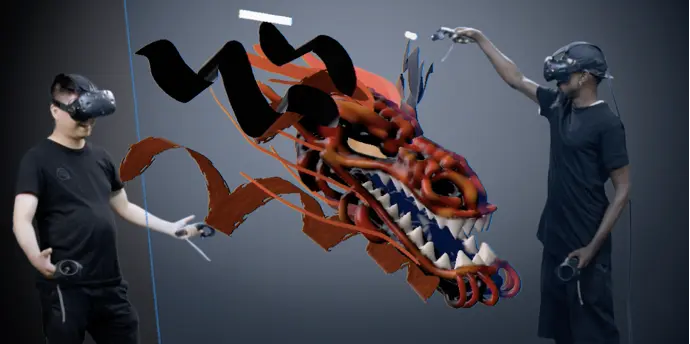What is VR Art?
In today’s media revolution, the virtual media artist is a new type of artist who leverages the aesthetic and innovative possibilities of image-creating processes to establish artistic positions and new perception options. Furthermore, the virtual reality artist explicitly investigates novel kinds of interface design and interaction, contributing to the medium’s evolution as both a technician and an artist. In virtual art, technology and art collaborate in the service of today’s complicated image-creation machines (Art Guide, n.d).
Advantages of VR Art

VR makes art more accessible to persons with impairments, allowing them to participate in and create art in ways that were previously not feasible. Individuals with mobility problems, for example, can browse virtual galleries without physical constraints, while those with visual impairments can interact with tactile or aural art. VR can also assist bridge cultural gaps and linguistic difficulties in the art industry, fostering diversity and inclusivity (Tugne Tamer, capsule signt, 15 May 2023).
Limitations of VR Art
However, there are several disadvantages to virtual reality art displays. For example, while wearing VR headsets, some viewers may experience motion sickness or discomfort, which can detract from their overall experience. Furthermore, the lack of physical presence and touch may hinder the viewer’s capacity to properly appreciate the material aspects of the artwork. Finally, VR technology can be costly, making virtual reality art displays inaccessible to some artists and viewers (Lee Down, artsartistartwork, 13 May 2023).
Experimentation with VR Art

Summary
After discovering and testing with VR Art, the decision was made not to use VR Immersive Art because, in my experience, you won’t be able to sit with a VR headset for lengthy periods of time because it causes headaches. Even though the software is simple to use and includes a tutorial, it takes time to become used to the 3D component of it, thus all view angles should be considered. You need a lot of space if you’re in starionary mode because there’s a chance you’ll hit someone. In terms of taking in more, the decision was made not to do so for the reasons stated previously.
References
Art Guide, n.d. What Is Virtual Art? [Online] (n.d.) Available at : https://www.artdex.com/what-is-virtual-art/ [Accessed in 15 November 2023]
Lee Down, artsartistartwork, 13 May 2023. Virtual Reality And The Future Of Art Exhibitions [Online] (n.d.) Available at : https://artsartistsartwork.com/virtual-reality-and-the-future-of-art-exhibitions/ [Accessed in 15 November 2023]
Tugne Tamer, capsule signt, 15 May 2023. Benefits of Virtual Reality for Art [Online] (n.d.) Available at : https://capsulesight.com/vrglasses/benefits-of-virtual-reality-for-art/ [Accessed in 15 November 2023]
